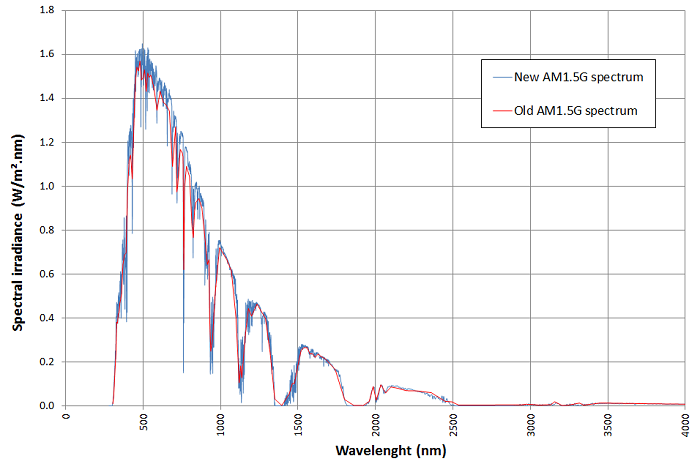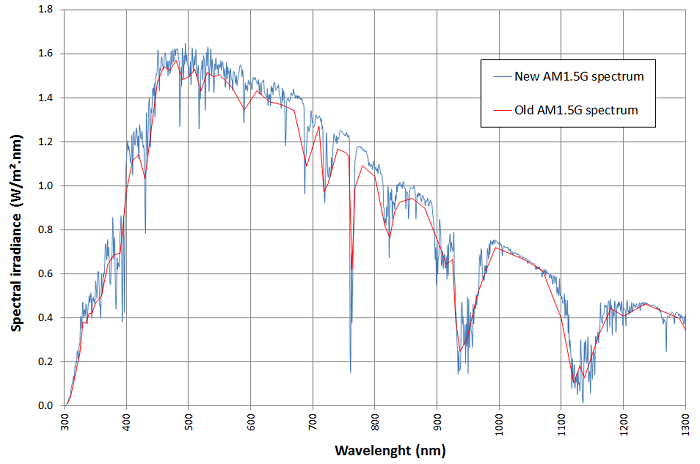About - Publications - Blog
Quick comparison between the old and the new standard AM1.5G spectrum
By convention, international standards exist for the characterization of photovoltaic solar cells. The two most important standards are:
- Solar cells for space applications are characterized under the incident light spectrum AM0 (solar spectrum at top of atmosphere at mean Earth-Sun distance), with a total power of the solar constant (about 1353 W/m²).
- Solar cells for terrestrial applications are characterized by the incident spectrum AM1.5G (*) , at 1000 W/m², at a cell temperature of 25 ° C. We wish to note that, in reality, a solar cell on Earth can never simultaneously have an incident AM1.5G spectrum, 1000 W/m² exposure and 25 °C cell temperature, unless in a laboratory.
(*) G = Global tilt = spectral radiation from the solar disk plus the diffuse light from the sky and the diffuse light reflected from the ground on a south facing surface tilted 37° from the horizontal.
In April 2008, the global reference spectrum tabulated in international standard IEC 60904-3 was revised from edition 1 to edition 2 (referred to as IEC 60904-3: 2008).
Reference for the new spectrum:
International Standard, IEC 60904–3, Edition 2, 2008. Photovoltaic devices—Part
3: measurement principles for terrestrial photovoltaic (PV) solar devices with
reference spectral irradiance data. ISBN 2–8318–9705-X, International
Electrotechnical Commission, April 2008.
Reference for the old spectrum:
Hulström, Bird and Riordan, Solar Cells vol 15, 365-391 (1985) as cited
by Partain, Solar Cells and their applications, Wiley 1995, p. 532.
Comparison between the old and the new spectrum:
(resolution: 1 nm, the data were linearly interpolated where necessary)

in detail:

Interesting follow-up:
Green, M. A., Emery, K., Hishikawa, Y., & Warta, W. (2009). Solar cell
efficiency tables (Version 33) short communication, progress in photovoltaics.Res
Appl, 3, 85-94.